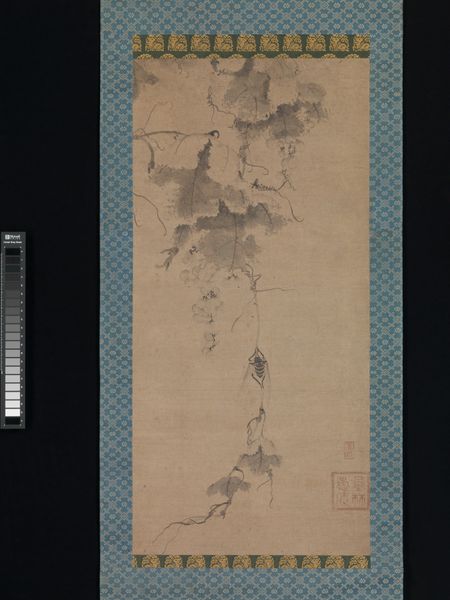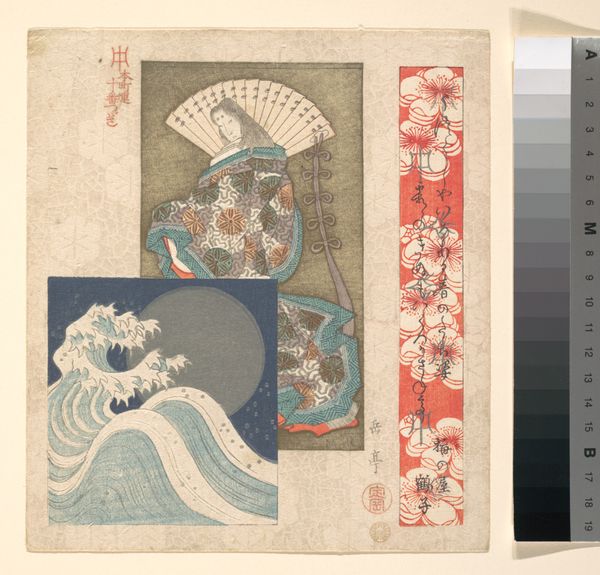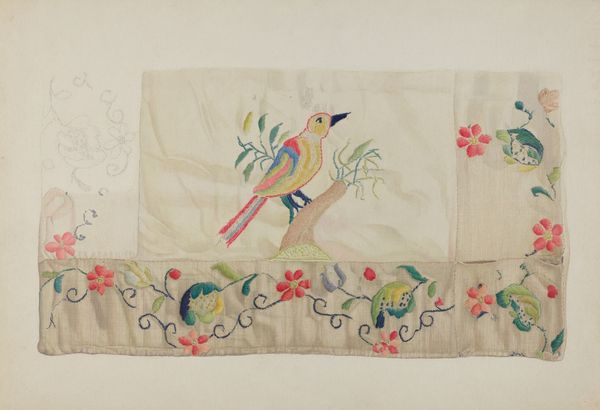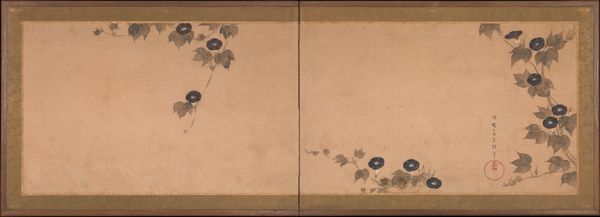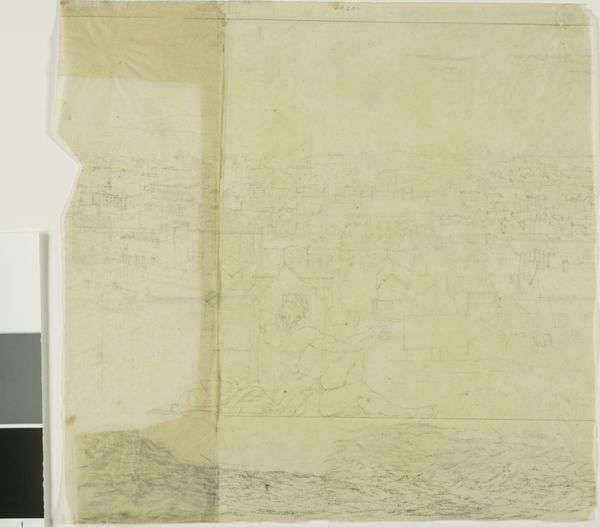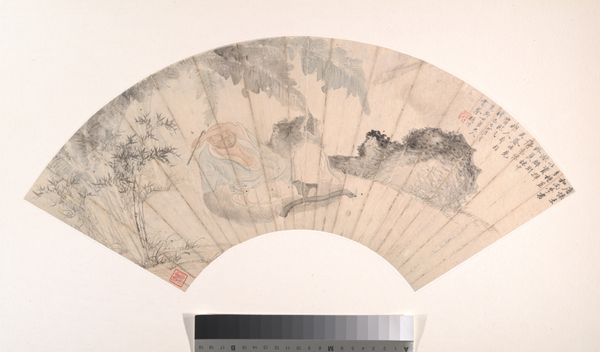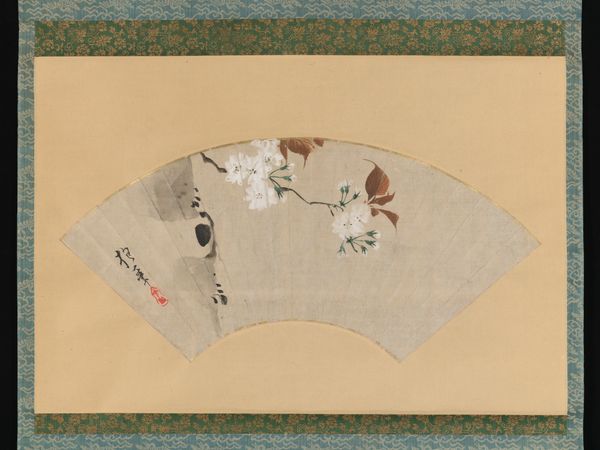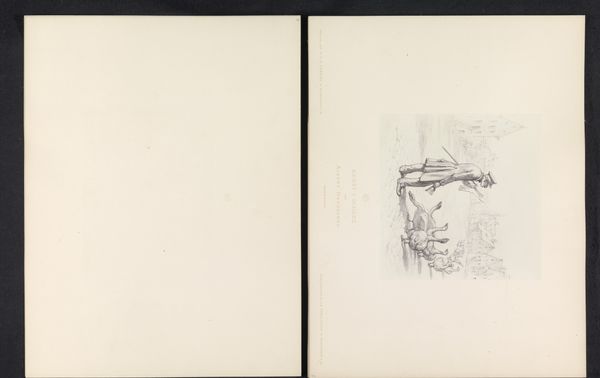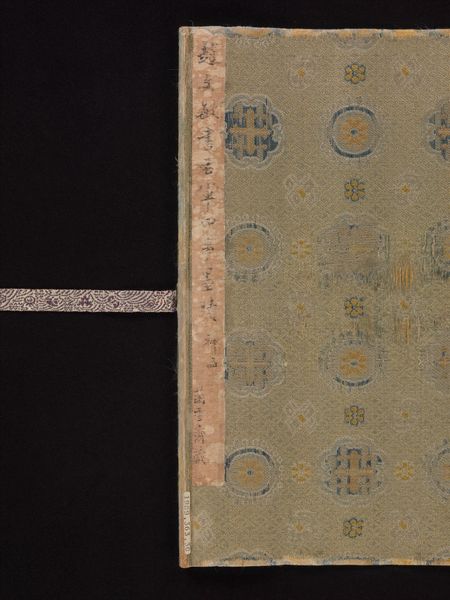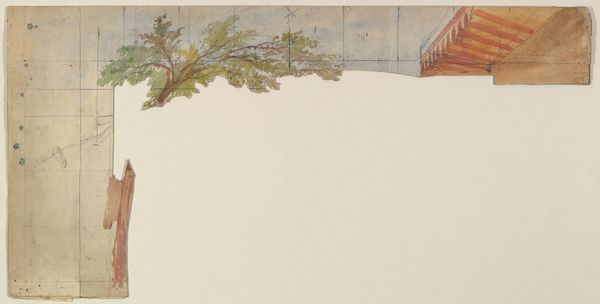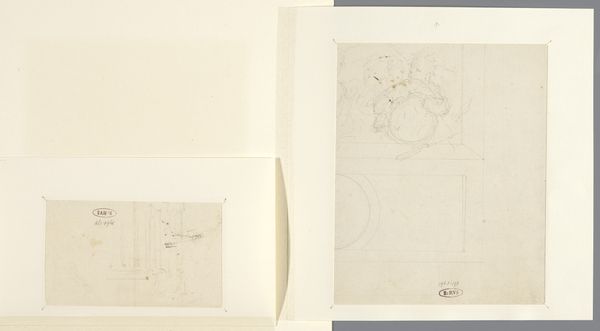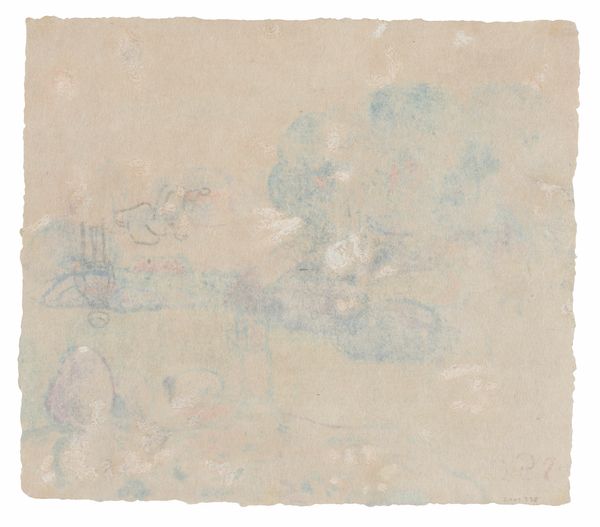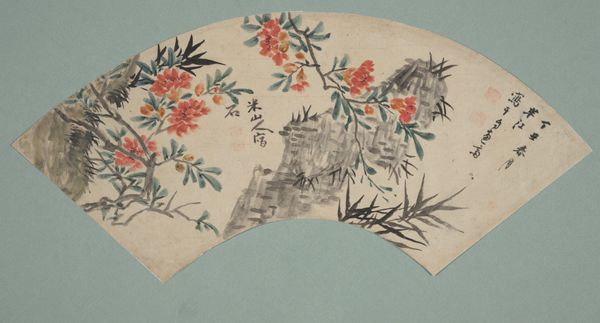
print, paper, ink, woodblock-print
#
animal
# print
#
asian-art
#
landscape
#
ukiyo-e
#
paper
#
ink
#
woodblock-print
Dimensions: 5 7/16 x 7 7/16 in. (13.8 x 18.9 cm)
Copyright: Public Domain
Curator: Right, let’s discuss this charming work. It's entitled “Cocks and Hens,” attributed to Ryūryūkyo Shinsai, and was created sometime between 1801 and 1813. It's a Japanese Ukiyo-e style woodblock print. What's your initial reaction to it? Editor: It feels... gentle. A rural morning scene, almost hazy. The colors are muted, lending a sense of tranquility. And all those chickens, clustered together, suggest a real communal vibe. It's far from ostentatious or aggressive. It is very peaceful and unassuming to the viewer. Curator: I find your characterization quite interesting. These Ukiyo-e prints served diverse public functions, offering stylized and popularized themes for consumers. Shinsai was, after all, working during a period of significant social and economic change in Japan, and the boom in publishing during this time served all classes of people. Depictions of ordinary life—such as fowl in a coop—appealed to a wide urban audience seeking affordable visual amusements. Editor: Hmmm. That adds an ironic depth. So, it is this very unassuming and ordinary moment depicted to the masses. I wonder, then, if the artist purposefully contrasted it to other art pieces or even cultural objects? Curator: The chickens can also be read symbolically, you know. In some contexts, the rooster represents virtues like courage, reliability, and even prosperity. Including them alongside the hens perhaps alludes to a stable, thriving household – a message of aspiration during uncertain times. The inclusion of text suggests a commemorative association with the chickens. The text might even tell a story that places more emphasis on them as being an economic asset to the family. Editor: You see aspirations and societal messaging; I am still charmed by the soft rendering of feathers, the implied sounds of clucking, and the overall gentle feeling. And is that plum blossom to the right? What is that all about? Curator: The plum blossom likely adds a seasonal element—blooming in late winter, it symbolizes the arrival of spring and the renewal of life. Spring is naturally going to allude to "life." It’s interesting how different audiences might respond to imagery, based on context and their personal perspective, isn't it? It is quite neat. Editor: Absolutely. For me, it's a small moment of quiet observation elevated into something beautiful, regardless of whether that observation is meant to be symbolic of the changing and more commercial world that was the time. Curator: Well said. It prompts us to consider how artworks are never fixed in their meanings, but always shifting with time and the viewer.
Comments
No comments
Be the first to comment and join the conversation on the ultimate creative platform.
